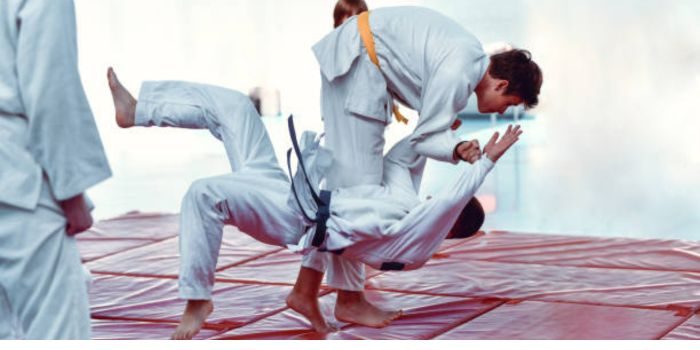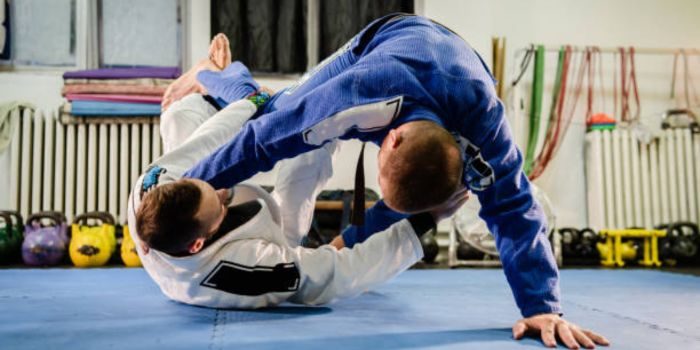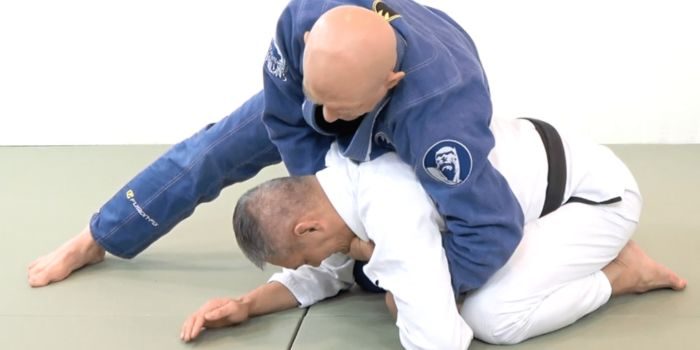I remember the first time I heard the phrase smash pass in a Brazilian Jiu-Jitsu (BJJ) gym. It wasn’t just another trendy term that fighters tossed around; it encapsulated a critical element of the ground game in BJJ. Initially, I wasn’t quite sure what it entailed—was it a technique, a strategy, or simply a brutish way to overpower an opponent? As I dove deeper into my training, the concept began to unfold before me, revealing layers of tactical depth and physical prowess.
In the world of grappling arts, terms and phrases often take on a life of their own, transcending the boundaries of the mat and becoming part of the sport’s rich lexicon. Smash pass is one such term that has echoed through the halls of academies and tournaments, resonating with practitioners of all levels. It’s a concept that might sound violent or overly aggressive to the uninitiated, but to those who practice BJJ, it’s a fundamental part of the game.
To truly understand the essence of smash pass it’s essential to peel back the layers of misconception and get to the heart of its meaning. This isn’t just about force; it’s about finesse, timing, and the strategic manipulation of one’s opponent. In the following sections, I will demystify this term and explore its significance in the world of BJJ.
The origins and evolution of Smash Passing in BJJ
The genesis of smash pass is as much a story about BJJ’s evolution as it is about the term itself. BJJ, with its roots in Judo and traditional Japanese Jiu-Jitsu, has always been a martial art focused on ground fighting and submissions. As the sport grew, especially with its introduction to the wider world in the early UFC events, practitioners began developing new strategies to deal with the guard—a defensive position where one player has their back on the ground with their legs between themselves and their opponent.
It emerged as a colloquial term to describe a range of techniques aimed at overcoming the guard. The “smash” part refers to the application of controlled pressure to break down the opponent’s guard structure. Meanwhile, “pass” signifies the act of maneuvering around or through the guard to achieve a more dominant position. The term reflects a dual approach: either you use pressure to “smash” their defenses, or you employ agility and technique to “pass” them.
Over time, as BJJ continued to evolve, so did the concept of “smash or pass.” The explosion of BJJ’s popularity globally has led to a constant innovation of techniques and strategies, with “smash passing” becoming a specialized area of study within the sport. This evolution has been marked by legendary practitioners who have refined and popularized various smash pass techniques, contributing to the art’s rich tactical diversity.

Understanding the meaning of Smash Pass BJJ
At its core, understanding the meaning of this requires an appreciation of the strategic choices a BJJ practitioner makes on the mat. When facing an opponent’s guard, a practitioner has to decide between imposing their weight and pressure to “smash” or using movement and leverage to “pass.” Each option carries its own risks and rewards and is selected based on the practitioner’s style, strengths, and the specific context of the match.
“Smash” implies a methodical approach, using one’s body weight and pressure to wear down an opponent’s defenses. This often involves getting close, eliminating space, and using one’s hips, shoulders, and grips to break the guard open. The intention is to create discomfort and force the opponent to make a mistake or concede a more dominant position.
On the other hand, “pass” involves a more dynamic and fluid approach. It’s about finding or creating openings in the guard and maneuvering through them with speed and precision. This could mean using techniques like the knee cut, leg drag, or quick transitions to bypass the legs and gain a superior position.
The true meaning of “smash or pass,” therefore, lies in the interplay between these two approaches. High-level practitioners blend the concepts, using pressure to set up passes or passing movements to create opportunities to apply pressure. It’s a dance of sorts, where the lines between smashing and passing blur, and the practitioner must be adept at both to excel in BJJ.
Breaking down the technique of Smash Passing in BJJ
let’s dissect the technique of this in BJJ. It isn’t just about using brute force; it’s a sophisticated method that involves several key components: positioning, pressure, and progression.
Positioning is the foundation of an effective smash pass. It begins with establishing a strong base and getting into an advantageous posture. This often means staying low, keeping your knees wide for balance, and securing grips that allow you to control your opponent’s hips and legs. Proper positioning ensures that you can apply maximum pressure without compromising your balance or opening yourself up to counter-attacks.
Pressure is the next critical element. It’s not about slamming your weight onto your opponent haphazardly; it’s about calculated force application. You need to concentrate your body weight through specific points of contact—often using your shoulder, chest, or hips—to compromise your opponent’s guard structure. The goal is to make them uncomfortable and limit their mobility, forcing them to react in ways that benefit your passing strategy.
Progression is the final piece of the puzzle. It is a step-by-step process where you gradually advance your position while maintaining pressure. This might involve sliding your knee up to break open their guard, using your upper body to pin their legs, or incrementally working your way past their knee line to secure side control. Each move is deliberate, and each advancement brings you closer to passing their guard entirely.
Understanding and mastering these components is critical for anyone looking to implement in their BJJ game. It’s a challenging technique that requires patience, control, and a deep understanding of the mechanics involved.
Credits – Absolute MMA St Ki
Common misconceptions
As with any term that becomes ingrained in a sport’s culture, there are bound to be misconceptions about what this’ actually entails. One of the most common misunderstandings is that it’s a purely strength-based approach, reliant on physical dominance rather than technique. This couldn’t be further from the truth. While strength can be an asset, the effectiveness of this is rooted in technique, leverage, and timing.
Another misconception is that it is a one-size-fits-all strategy, suitable for any situation on the mat. In reality, it’s a highly situational approach, and its success depends on a variety of factors, including your opponent’s guard style, their physical attributes, and the current dynamics of the match. A rigid adherence to smashing or passing without adaptation can lead to predictability and failure.
Lastly, there’s the idea that it is inherently injurious or aggressive. Although the term “smash” may imply a certain level of force, the objective is not to harm one’s training partners or opponents. The application of pressure is controlled and purposeful, adhering to the principles of respect and safety that are fundamental to BJJ practice.
Dispelling these misconceptions is important for practitioners who want to understand and effectively implement this approach in their own BJJ journey.

The importance of Smash Passing in BJJ strategy
The strategic value of this in BJJ cannot be overstated. It’s a versatile approach that offers several key advantages. Firstly, it can be incredibly effective against opponents with a strong guard game. By utilizing pressure and control, you can break down even the most intricate guard variations, from the closed guard to the more dynamic spider or De La Riva guards.
Secondly, it can serve as a catalyst for a submission-oriented game. As you apply pressure and advance your position, you often force your opponent to expose limbs or necks, creating opportunities for submissions. The constant threat of the pass can lead to hasty reactions from your opponent, which a savvy practitioner can exploit to secure a finish.
Lastly, the psychological impact of a well-executed smash pass shouldn’t be underestimated. Consistently imposing your will and breaking through your opponent’s defenses can be demoralizing for them and energizing for you. It’s a momentum-builder that can shift the tide of a match and contribute to an overall game plan that prioritizes control and dominance.
Incorporating it into your BJJ strategy requires a balance of aggression and restraint, and when done correctly, it can be a game-changer on the mats.

Conclusion
As I reflect on my journey in BJJ, I’ve come to embrace the true definition of “smash or pass.” It’s not a mere buzzword or a simplistic approach to grappling—it’s a nuanced strategy that encompasses technique, pressure, and adaptability. Whether you’re a seasoned practitioner or new to the sport, understanding and applying the principles of it can elevate your game and provide you with a powerful tool on the mats.
FAQ’s
What is a smash pass in Jiu Jitsu?
In Jiu Jitsu it is a technique used to overcome an opponent’s guard by applying controlled pressure to break down their defenses and pass to a more dominant position such as side control or mount. It involves a combination of positioning, pressure, and progression to effectively advance past the guard.
How do you smash and pass?
To smash and pass, you start by establishing a strong base and securing grips to control your opponent’s hips and legs. Then, you apply concentrated pressure through specific points of contact, using your body weight to create discomfort and limit their mobility. Finally, you progressively advance your position while maintaining pressure until you successfully pass their guard.
What does passing mean in BJJ?
Passing in BJJ refers to the act of moving past an opponent’s legs or guard to achieve a more advantageous position, typically side control, mount, or back control. It’s a fundamental aspect of the ground game in BJJ and is rewarded with points in competition.
Is BJJ a tough sport?
BJJ is considered a tough sport due to its physical and mental demands. It requires a combination of strength, flexibility, endurance, and strategic thinking. Practitioners must be willing to engage in close physical contact and endure rigorous training to excel in the sport.
Does BJJ take a toll on your body?
Yes, BJJ can take a toll on your body. Like any combat sport, it involves a risk of injury and physical strain. However, with proper training, conditioning, and adherence to safety protocols, practitioners can minimize these risks and enjoy a long and healthy BJJ career.
Feel free to comment down there,what you think about this blog.I would be happy.


